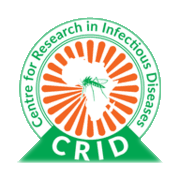PhD Research
Our PhD students are carrying out research on interesting and innovative projects…
1. Identification, Molecular Characterization and Quantification of Aedes Mosquito-borne Virome in Cameroon
Student: MBIGHA CELES
Rationale: During my Global minds PhD proposal, I will use the NetoVIR protocol to study the spatial and temporal distribution of the virome in Aedes mosquitoes from Cameroon based on different geographical and climatic zones. The understanding of the virome in mosquito species in Cameroon will generate a baseline data for better assessment of mosquito-borne disease risk, vector competence, and provide enlightenments for mosquito control strategies, which I intend to further pursue during my post-doctoral studies.
2. Immune Responses To Schistosoma Mansoni In Two Rural Foci In Cameroon; “The Role Of Multivariate Vaccine Constructs”
Student: AKWELLE NGWESE ROLAND
Rationale: The use of single recombinant antigens in immune-prophylaxis tend to induce insufficient immunity and consequently elicit limited protective effects against schistosoma mansoni. Therefore, integrated control targeting all the stages of the parasite life cycle, is an approach that will lead to sustainability in control and future elimination of human schistosomiasis. In this regard, we set out to design and validate a multivariate vaccine construct with antigenic determinants of proteins from all the stages of the parasite involve in different key biological functions in an attempt to develop a therapeutic/prophylactic vaccine with higher levels of vaccine-induced protection.
3. Functional Characterisation Of CYP6P4a And CYP6P4b Genes Associated With Insecticide Resistance In Anopheles Funestus; A Major African Malaria Vector
Student: TCHATCHOUA TATCHOU NELLY MANUELA
Rationale: There has been an observed rise in the development of resistance to insecticides in malaria vectors like An. funetus and this has resulted to decrease efficacy in vector control and rise in clinical cases. Precisely, pyrethoid resistance has been shown to escalate across the African continent. In effect, many cytochrome genes have been characterised as being involved in the metabolic detoxification of this insecticide. The aim of my research is therefore, to decipher the role of some of these genes in pyrethroid resistance
4. Structual Analysis Of OV47 Parent Protein And Humoral Immune Responses To Its Synthetic Epitopes Cocktails
Student: YENGO BERNIS NENEYOH
Rationale: As the public health goal for onchocerciasis has shifted from control of transmission to elimination, there is need for continuous search for tools to evaluate progress towards success, determine treatment endpoints and detect potential recrudescence. The OV16 ELISA test in children is currently used for this purpose. Unfortunately, not all children with patent onchocerciasis infection develop antibodies against the OV16 antigen and it cannot differentiate current from past infection. There is therefore the need for a continuous search for antigens that could serve as markers for the disease. Synthetic peptide cocktails have been reported to have high sensitivity and specificity in diagnostic assays. This work therefore aims to characterize the structure of an onchocercal antigen, the parent protein of OV47and determine the humoral responses (IgG and IgG4) to its synthetic peptide cocktails in children for the development of tools to be used in monitoring success of ivermectin treatment programs, determination of treatment endpoints and detection of potential recrudescence.
5. Serological Characterization Of Ovmane1 Chimeric Antigen In View Of Developing An Antigen Capture Test For Human Onchocerciasis
Student: CABIROU MOUNCHILI SHINTOUO
Rationale: The public health goal of onchocerciasis has shifted from control to elimination in Africa. Appropriate diagnosis is a necessary tool to confirm elimination as well as conduct surveillance to detect any potential recrudescence of the disease. Current diagnostic procedures are either insensitive, invasive, not applicable for field use and incapable of differentiating past from present infection. Moreover, some infected persons are reported to be negative due to genetic restrictions against single antigens. This implies that the test systemically produces false negative individuals who might continue to serve as reservoirs for infections. While suitable antigen capture tests will be able to discriminate between active and passive infections, the challenge of genetic restriction encountered using single antigens can be overcome by using multi-epitope antigens. These tools in combination will help in monitoring of elimination efforts.
6. Insights into routes of transmission of Buruli ulcer [Mycobacterium ulcerans infection] using high-throughput next-generation sequencing.
Student: FRANCIS ZEUKENG
Rationale: Buruli ulcer (BU) is a skin-neglected tropical disease caused by infection with Mycobacterium ulcerans. The disease has been reported in more than 33 countries worldwide; however, the biggest burden of disease is found in impoverished rural areas of West and Central Africa. The disease involves subcutaneous tissue and has several manifestations but necrotic skin ulcers are a common presentation, caused by a bioactive lipid called mycolactone. Epidemiological studies frequently link BU occurrence with low-lying and wetland areas and human-to-human transmission is rare, suggesting an environmental source of the mycobacterium. Many critical issues for disease control, such as understanding the mode of transmission and identifying source reservoirs of M. ulcerans, are still largely unknown. The advent of low-cost genomics and high-throughput next-generation sequencing has opened up new possibilities to explore and track the movement and spread of this pathogen within endemic communities. We use genomics to reconstruct the evolutionary trajectory and dynamics of M. ulcerans populations in endemic areas. We further combine the phylogeographic reconstruction of M. ulcerans genotypes with fine-scale geographic information on the origin of the patients from which the M. ulcerans strains are isolated to establish epidemiological links and make inferences on routes of transmission of Buruli ulcer.
7. ASFV Biomaker Discovery Based On The Immune Response of Different Pigs in Cameroon
Student: EBANJA JOSEPH
Rationale: This project aims to develop a rational approach for the design of immunomodulators. It is envisaged that these modulators can potentially be used to direct the immune response mounted by a domestic pig following ASFV infection to become more similar as the immune response from a pig that survived ASFV infection, a bush pig or warthog boar. The latter two remain asymptomatic during ASFV infection. To this end, we will use ASFV strains isolated in Cameroon in combination with macrophages isolated from domestic, bush pigs, Red river hog, and warthogs. The general objective is molecular characterization of the response of different macrophage lineages isolated from different types of a pig upon infection with ASFV isolates from Cameroon. This approach should allow us to identify a drug target that might allow us to modulate macrophages from domestic pigs to overcome ASFV infection; similar to bush pigs and warthogs. In parallel, we will also generate molecular clones of ASFV strains endogenous to Cameroon that can be developed into a future vaccine. Furthermore, this research project can also result in diagnostic tools, specific for the field situation in Cameroon which can help to detect either the virus or the antibody response mounted by the host to overcome ASFV infection. These tools (vaccines and diagnostics) can subsequently be used to develop an ASF control measure for Cameroon to inforce the country’s Livestock policy plan.
8. Nutritional Status Of Children Below 5 Years In The Forest Community Of Ndelele In The East Region Of Cameroon: The Association Between Socio-Cultural Practices, Soil-Transmitted Helminth Parasitic Infections, Malaria And Anaemia With Childhood Undernutrition
Student: BERTHA FRU ASA
Rationale: Sociocultural, institutional, infrastructural and hygienic factors may be the root cause of malnutrition in forest-adjacent communities. Understanding the role of socio-cultural practices in the nutrition of people living in forest communities, the infections they encounter, and dietary contributions of wild foods, will help us to better understand the nutritional intake of children in the study area and how their nutrition affects their health status. The UNICEF is doing a lot of work on nutrition in the borders of the East region but truly little has been done in the Ndelele municipality, hence this study aims at determining the root causes of undernutrition in association with other factors among children below 5 years.
The forest serves as a source of food, meat, fish and fuel for people living in forest communities, but research has demonstrated that these people especially children are most often undernourished. In most forest areas in Cameroon, including this study area, little work has been done on the determinants and risk factors of malnutrition among children under the age of 5yrs. Moreover, risk of nutritional deficiency in children within the age bracket of 0-5 are always high and their nutritional status are poorly documented. Identification of risk factors that may contribute to the occurrence of malnutrition among children below 5 years of age in the Ndelele municipality will help us understand why in an area which is supposedly rich in vegetables and proteins, the children are persistently malnourished. Assessing the effectiveness of handwashing and proper storage of water as an intervention strategy could serve as a pilot study protocol, in preparation of a fully powered cluster randomised controlled trial in the whole of Ndelele municipality and why not in all affected areas in Cameroon.
People We Collaborate With
We collaborate with these institutions/labs and their personnel to advance Research and Development on Molecular and Cell Biology.


